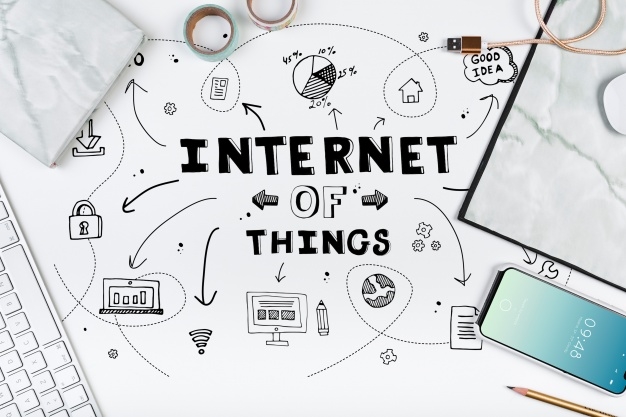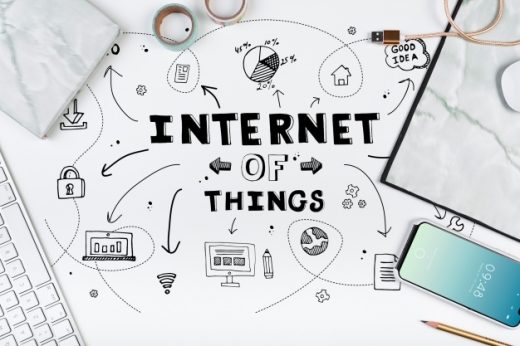How IoT is Optimizing Costs for Industrial Sectors
How IoT is Optimizing Costs for Industrial Sectors

The fourth industrial revolution is upon us and it is already transforming the entire industrial landscape as we know it.
With heavy use of emerging technologies such as IoT, Cloud-Computing, Big-Data Analytics, AI, Augmented Reality, Robotics and Cyber-Physical Systems (CPS) amongst others, industries are moving towards creating a more collaborative environment that facilitates greater exchange of data, reduced costs and increased productivity, also known as Industrial IoT or IIoT.
Increased IIoT investments in the field of manufacturing, transportation, utilities, and healthcare have been witnessed and for all the right reasons.
Manufacturing industries all over the globe are the leading investors in IIoT making use of industrial sensors, beacons, advanced RFID tags, in-store analysis, and connected manufacturing machines (even robotics) to collect and analyze data from various data points to optimize a myriad of manufacturing processes and operations such as Product Life-cycle Management (PLM), Enterprise Resource Planning (ERP). Manufacturing Execution Systems (MES), and Supply Chain Management (SCM).
And of all the business that chose to implement IoT within their systems, 94 percent have already seen a healthy return on their investments. So, you’d think with a return that good, many businesses would be making some or the other use of IoT for better management of their operations. That’s where you’re wrong.
Surprisingly, less than a third of industrial decision-makers have implemented a well-articulated IoT strategy for their business and less than a quarter have a comprehensive roadmap to make use of it in the future.
Which should not be the case. With a return that good, you should jump on the IoT bandwagon as soon as you can and make use of this impressive technology to reach the full potential of your business and scale it to new heights.
Here are a few ways you can leverage IoT to better manage your various business processes, increase overall performance and reduce costs.
Proactive Asset Management
Comprehensive IoT solutions can help organizations keep a track of the health, location, and efficiency of all their assets. Assets can include everything from handheld devices, raw materials to large industrial equipment.
With the help of smart sensors that convey real-time data about the location, performance and overall condition of your assets, you can eradicate downtime by implementing predictive maintenance of your assets in critical condition and save yourself from huge losses.
When it comes to asset management, to save costs, there are a lot of industries out there that are making use of asset tracking and management capabilities of IoT.
Mining industries, for example, are using smart sensors in their mining sites to keep a check on the air surrounding the area. If there are harmful gases present in the air of a mining site, smart sensors can detect that and convey the information to site managers so that they can halt processes and protect the well-being of their workers. The heavy equipment used in the mining sector can also be studded with many IoT sensors to optimize how they are being used and deployed to help maximize return on investment, increase efficiency and reduce costs.
Another use case of asset tracking and management with the help of IoT can be witnessed in the maritime shipping industry. IoT sensors are placed on ships to track their exact location throughout their journey. And on a more granular level, each container carried by these ships are also IoT enabled to make sure the containers are shipped in the right environmental conditions to ensure the goods inside these containers are not harmed in any way.
Inventory Management
All your inventory can be tracked and traced globally with the help of smart IoT devices on a granular level. Executives can have access to real-time data about the available material, work-in-progress and estimated arrival time of new materials. Ultimately, this helps managers manage demand and optimize supply accordingly and reduce shared costs in the value chain.
Perhaps, the biggest example of a company using IoT to better manage its inventory is Amazon. Amazon currently manages more than 500 million stock keeping units (SKUs) and operates more than 490 fulfillment centers and hubs all around the globe. Amazon employees used to manually walk-through these massive fulfillment centers picking their products.
But all of that changed when Amazon acquired Kiva Systems in 2012, which is a company that manufactures IoT enabled robots. Since these robots have all the data about where a specific product is in their massive inventory, it enables them to do all the legwork with unparalleled efficiency and helps them cut down redundant operational costs. By making use of these Kiva robots in just 13 of their fulfillment centers, Amazon reportedly saves around $20 million yearly on each of them. Which, apparently is a lot.
Strict Quality Control
By placing IoT sensors on your products or its manufacturing units, you can collect aggregated product data and other vital data from various stages of the product cycle. IoT sensors can detect substandard raw materials used in the making of the product, transportation impact on the product, wastes, effects of environmental factors on the product. By keeping the deviations in check, IoT systems can help managers keep strict quality control on their products and optimize costs.
Harley Davidson, for example, amongst a myriad of IoT sensors placed in the manufacturing units of their plant in York, Pennsylvania, has placed smart IoT sensors in their paint booth to keep a check on its heat and humidity levels. If the heat and humidity level of their paint booth fluctuates from the set standard, the IoT sensors automatically detect it and adjust the speed of fans accordingly to make sure the right environmental conditions are maintained for a superior paint job the company is renowned for.
Product Packaging Optimization
By placing IoT sensors on the packaging of the product, manufacturers can gain insights into various environmental and handling effects on the product and if it has been tampered with during transit. Using this insight, managers can decide upon if the packaging needs to be changed for the product in order to make sure it is not compromised in any way when it ultimately reaches to the customer. Or if the product or its packaging needs to be completely re-engineered from the ground up for attaining better performance, saving costs or to provide a better customer experience throughout the product journey.
And this is not all, there are other IoT product packaging optimization use cases as well. One of them is digital labels. Putting digital labels on the packaging of a product allows customers to access all the information about a product almost instantly.
It works in tandem with QR codes and other triggers and can pull up images, videos, and tutorials about any relevant information that can help the customer use the product better. Using these labels, real-time coupons and discounts as well which is great for delivering great customer experiences.
Other than that, smarter product packaging solutions can also be studded with tracking logs and microchips to ensure authenticity and many big companies like Luis Vuitton, MK, Chanel and Levi’s are already making use of this technology to fight counterfeit issues, protect their customers and their brand’s reputation.
Supply Chain Management
Industrial Internet of Things provides access to the supply chain in real-time by tracking materials, equipment or products as they move through the supply chain. By connecting plants to suppliers using IoT, all the concerned parties in the supply chain can track and trace dependencies, material flow and manufacturing cycle times to potentially reduce wait times and fulfill other capital requirements.
With the help of smart IoT devices, reporting of the entire supply-chain helps manufacturers to collect and feed important delivery information to ERP, PLM and other vital systems. It also helps manufacturers to figure out and rectify critical issues in the supply chain and improve its efficiency marginally.
The post How IoT is Optimizing Costs for Industrial Sectors appeared first on ReadWrite.
(37)


